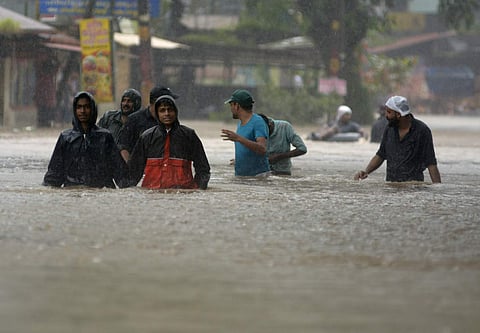

The recent economic slowdown and drop in tax revenue have dented the Kerala government’s development funding. The state’s finance is further stretched by the flood-damaged infrastructure. An assessment by a UN team has estimated Rs 31,000 crore to rebuild the flood-devastated state.
The state has constituted Overseas Keralities Investment & Holding Ltd (OKIH) with a view to seek greater participation of Non-Resident Keralites (NRKs) in the development of the state. For a state with nearly Rs 1.1 lakh crore of remittance a year by 22 lakh NRKs, issuing “diaspora bonds” through OKIH could be an innovative, cheap and steady source of external finance for development projects. The diaspora bond, a type of government debt, has been successfully utilised by many countries to raise fund from their citizens abroad for development projects.
Israel, a model for effectively employing diaspora bond as a perennial source of external capital, has successfully tapped the wealth, goodwill and patriotism of its diaspora. In 2013, Nigeria raised $100 million through private placement of diaspora bonds. India too has occasionally raised funds from NRIs. With NRK remittance contributing around 36 per cent of the state GDP (ten times the national percentage), diaspora bond could be a potential instrument to tap development fund.
The World Bank estimated that with a remittance of $80 billion, India would retain its position as the world’s top recipient of diaspora remittance in 2019. Kerala ranks first in NRI remittances in India, receiving 19 per cent of the total remittance. Nearly 39 per cent of the bank deposits in the state came from NRI remittance which almost equals state’s annual budget. Over the decades, NRK remittance remains the main source for private investments in housing, automobiles, hospitals, higher education and consumables. But it was rarely adapted as a financial instrument for development projects.
Developing strategies to use “Keralites’ money for Kerala projects” and creating jobs for posterity are the need of the hour. Though dollar-denominated bonds can lure investors, volatile rupee could expose the state to unpredictable financial risk. In the long run, rupee depreciated by 330 per cent, from Rs 17/dollar in January 1990 to Rs 71/dollar in 2020, averaging 10.7 per cent/year depreciation. Even assuming an average 8 per cent depreciation, 2 per cent dollar bond will have effective financing cost of 10 per cent. Usually, NRKs have their financial plans and commitments back home and hence may not be very apprehensive of rupee depreciation.
They may be willing to accept the debt service in rupee terms. While NRIs are getting less than 6.5 per cent interest for their commercial bank deposits, the state government raised Rs 2,150 crore through KIIFB. Why do we pay less to NRKs? Issuing the diaspora bond with a higher interest rate than the bank deposit but lower than the masala bond rate would be a win-win for both the NRKs and the government. A prudent financial management should also factor in the cash flow aspect. The cash outflow on interest payment to the masala bonds will cost the state Rs 209 crore a year.
This means Rs 1,050 crore will flow out of the country in five years which could have been saved and circulated within the country, if it was domestically raised. The proceeds from the diaspora bonds can be earmarked for specific development projects. Linking the bond to the national pension scheme and medical insurance can make the bond appealing to investors. Exploring the untapped diaspora fund could be a game changer in sourcing development fund.
(Francis Mathew is a chartered accountant and the co-founder of Scaleup Consulting LLP, formerly with Asian Development Bank; email: fmathewca@gmail.com)